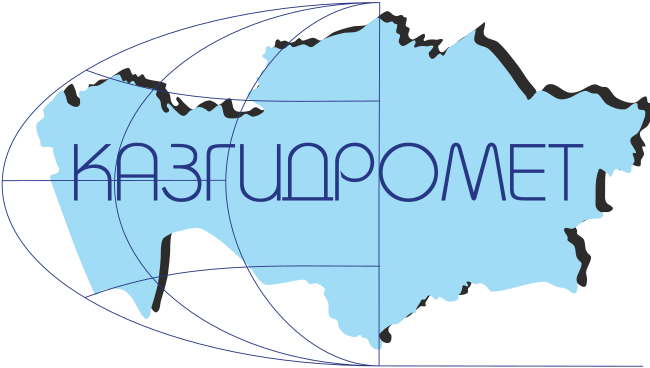ОЦЕНКА ЭКОЛОГИЧЕСКОГО СОСТОЯНИЯ ПОЧВЕННОГО ПОКРОВА ПРОМЗОНЫ, ЗАГРЯЗНЕННОГО ТЯЖЕЛЫМИ МЕТАЛЛАМИ (НА ПРИМЕРЕ КАРАГАНДИНСКОГО МЕТАЛЛУРГИЧЕСКОГО КОМБИНАТА)
DOI:
https://doi.org/10.54668/2789-6323-2025-117-2-38-48Ключевые слова:
загрязнение, тяжелые металлы, почвенный покров, черная и цветная металлургия , рентгенофлуоресцентная спектроскопия, атомно-адсорбционный метод, экосистемаАннотация
Загрязнение почвы в производственной зоне тяжёлыми металлами является сложной экологической проблемой. В исследовании были взяты образцы почвы с территории металлургического предприятия Центрального Казахстана Qarmet АО — крупнейшего металлургического завода Казахстана «Карагандинский металлургический завод», расположенного в городе Темиртау, Карагандинская область, и состав тяжёлых металлов был определён с помощью атомно-абсорбционного спектрофотометра (AAS) и рентгеновской флуоресцентной спектроскопии. В пробах почвы обнаружено 11 тяжелых металлов, а в растворенном состоянии обнаружены следующие тяжелые металлы: TiO2, MnO, Fe2O3. Известно, что концентрация тяжелых металлов Sr, Zn, Cr и Cu в пробах почвы значительно выше. По результатам исследований установлено, что концентрация тяжелых металлов возрастает в ряду Sr>Zn>Cr>Cu>V>Ni>Pb>As>Co>Cd>Hg. В результате сравнения трех проб №1, №2, №5 с наибольшим уровнем загрязнения наиболее высокая концентрация стронция в первой пробе составляет 287,1±0,05 мг/кг (р<0,05), наибольшая концентрация цинк во второй пробе составляет 132,2±0,05 мг/кг (р<0,05), высокая концентрация хрома в первой пробе 137,2±0,05 мг/кг (р<0,05), установлено, что наибольшая концентрация меди составила 87,6±0,05 мг/кг (р<0,05) в втором образце. По результатам анализа проб почвы установлено, что почва возле металлургического завода загрязнена стронцием, цинком, хромом и медью.
Библиографические ссылки
Ao M., Chen X., Deng T., Sun S., Tang Y., Morel J. L., Wang S. (2022). Chromium biogeochemical behaviour in soil-plant systems and remediation strategies: A critical review. Journal of hazardous materials, Vol. 424, pp. 127233. https://doi.org/10.1016/j.jhazmat.2021.127233
Sun Z., Zhao M., Chen L., Gong Z., Hu J., M, D. (2023). Electrokinetic remediation for the removal of heavy metals in soil: Limitations, solutions and prospection. Science of the Total Environment, Vol. 903, pp. 165970. https://doi.org/10.1016/j.scitotenv.2023.165970
Qu Z., Huang L., Guo M., Sun T., Xu X., Gao Z. (2023). Application of novel polypyrrole/melamine foam auxiliary electrode in promoting electrokinetic remediation of Cr (VI)-contaminated soil. Science of the Total Environment, Vol. 876, pp. 162840. https://doi.org/10.1016/j.scitotenv.2023.162840
Oh Y. J., Song H., Shin W. S., Choi S. J., Kim Y. H. (2007). Effect of amorphous silica and silica sand on removal of chromium (VI) by zero-valent iron. Chemosphere, Vol. 66(5), pp. 858-865. https://doi.org/10.1016/j.chemosphere.2006.06.034
Burger A., Lichtscheidl I. (2019). Strontium in the environment: Review about reactions of plants towards stable and radioactive strontium isotopes. Science of the Total Environment, Vol. 653, pp. 1458-1512. https://doi.org/10.1016/j.scitotenv.2018.10.312
Cohen‐Solal M. (2002). Strontium overload and toxicity: impact on renal osteodystrophy. Nephrology Dialysis Transplantation, Vol. 17(suppl_2), pp. 30-34. https://doi.org/10.1093/ndt/17.suppl_2.30
Novotny E. H., Maia C. M. B. D. F., Carvalho M. T. D. M., Madari B. E. (2015). Biochar: pyrogenic carbon for agricultural use-a critical review. Revista Brasileira de Ciência do Solo, Vol. 39(2), pp. 321-344. https://doi.org/10.1590/01000683rbcs20140818
Kong J., Huang F., Wei R., Zhang X., Zhu G., Guo Q. (2024). Study on the variation mechanism of Zn isotope in polluted farmland soil. Journal of Hazardous Materials, Vol. 479, pp. 135561. https://doi.org/10.1016/j.jhazmat.2024.135561
Kalousek P., Holátko J., Schreiber P., Pluháček T., Širůčková Lónová K., Radziemska M., Brtnický M. (2024). The effect of chelating agents on the Zn-phytoextraction potential of hemp and soil microbial activity. Chemical and Biological Technologies in Agriculture, Vol. 11(1), pp. 23. https://doi.org/10.1186/s40538-024-00544-6
Tidemann-Andersen I., Acham H., Maage A., Malde M. K. (2011). Iron and zinc content of selected foods in the diet of schoolchildren in Kumi district, east of Uganda: a cross-sectional study. Nutrition Journal, Vol. 10, pp. 1-12. https://doi.org/10.1186/1475-2891-10-81
John S. G., Park J. G., Zhang Z., Boyle E. A. (2007). The isotopic composition of some common forms of anthropogenic zinc. Chemical Geology, Vol. 245(1-2), pp. 61-69. https://doi.org/10.1016/j.chemgeo.2007.07.024
Hao L., Zhang B., Tian C., Liu Y., Shi C., Cheng M., Feng C. (2015). Enhanced microbial reduction of vanadium (V) in groundwater with bioelectricity from microbial fuel cells. Journal of Power Sources, Vol. 287, pp. 43-49. https://doi.org/10.1016/j.jpowsour.2015.04.045
Moskalyk R. R., Alfantazi A. M. (2003). Processing of vanadium: a review. Minerals engineering, Vol. 16(9), pp. 793-805. https://doi.org/10.1016/S0892-6875(03)00213-9
Naeem A., Westerhoff P., Mustafa S. (2007). Vanadium removal by metal (hydr) oxide adsorbents. Water research, Vol. 41(7), pp. 1596-1602. https://doi.org/10.1016/j.watres.2007.01.002
Navarro R., Guzman J., Saucedo I., Revilla J., Guibal E. (2007). Vanadium recovery from oil fly ash by leaching, precipitation and solvent extraction processes. Waste Management, Vol. 27(3), pp. 425-438. https://doi.org/10.1016/j.wasman.2006.02.002
Ortiz I., Sanz J., Dorado M., Villar S. (2007). Técnicas de recuperación de suelos contaminados. Informe de Vigilancia Tecnológica. Universidad de Alcalá. Dirección General de Universidades e Investigación. España. [in Spanish]
Hu B., Shao S., Ni H., Fu Z., Hu L., Zhou Y., Shi Z. (2020). Current status, spatial features, health risks, and potential driving factors of soil heavy metal pollution in China at province level. Environmental Pollution, Vol. 266, pp. 114961. https://doi.org/10.1016/j.envpol.2020.114961
Kumar S., Prasad S., Yadav K. K., Shrivastava M., Gupta N., Nagar S., Malav L. C. (2019). Hazardous heavy metals contamination of vegetables and food chain: Role of sustainable remediation approaches-A review. Environmental research, Vol. 179, pp. 108792. https://doi.org/10.1016/j.envres.2019.108792
Saman R. U., Shahbaz M., Maqsood M. F., Lili N., Zulfiqar U., Haider F. U., Shahzad B. (2022). Foliar application of ethylenediamine tetraacetic acid (EDTA) improves the growth and yield of brown mustard (Brassica juncea) by modulating photosynthetic pigments, antioxidant defense, and osmolyte production under lead (Pb) stress. Plants, Vol. 12(1), pp. 115. https://doi.org/10.3390/plants12010115
Renu Agarwal M., Singh K. (2017). Methodologies for removal of heavy metal ions from wastewater: an overview. Interdisciplinary Environmental Review, Vol. 18(2), pp. 124-142. https://doi.org/10.1504/IER.2017.087915
Priyadarshanee M., Das S. (2021). Biosorption and removal of toxic heavy metals by metal tolerating bacteria for bioremediation of metal contamination: A comprehensive review. Journal of Environmental Chemical Engineering, Vol. 9(1), pp. 104686. https://doi.org/10.1016/j.jece.2020.104686
Arora N. K., Chauhan R. (2021). Heavy metal toxicity and sustainable interventions for their decontamination. Environmental Sustainability, Vol. 4(1), pp. 1-3. https://doi.org/10.1007/s42398-021-00164-y
Deligodina Y. N., Zacharova O. L., Saveleva I. N., Schanina E. V. (2017). Features of heavy metal deposition in soils affected by thermal power enterprises. Uspekhi Sovremennogo Estestvoznaniya, Vol. (7), pp. 71–75. [in Russian]
Zaksas N. P. (2019). Solid sampling in analysis of various plants using two-jet plasma atomic emission spectrometry. Applied Spectroscopy, Vol. 73(8), pp. 870-878. https://doi.org/10.1177/0003702819845935
Vodyanitskii Yu. N. (2012). Geochemical fractionation of lanthanides in soils and rocks: A review of publications. Pochvovedenie, Vol. 3, pp. 368–375. https://doi.org/10.1134/S1064229312010164
Cempel M., Nikel G. J. P. J. S. (2006). Nickel: a review of its sources and environmental toxicology. Polish journal of environmental studies, Vol. 15 (3).
Dabonne S., Koffi B., Kouadio E., Koffi A., Due E., Kouame L. (2010). Traditional utensils: potential sources of poisoning by heavy metals. British Journal of Pharmacology and Toxicology, Vol. 1(2), pp. 90-92.
Okereafor U., Makhatha M., Mekuto L., Uche-Okereafor N., Sebola T., Mavumengwana V. (2020). Toxic metal implications on agricultural soils, plants, animals, aquatic life and human health. International journal of environmental research and public health, Vol. 17(7), pp. 2204. https://doi.org/10.3390/ijerph17072204
Wu P., Jiang L. Y., He Z., Song Y. (2017). Treatment of metallurgical industry wastewater for organic contaminant removal in China: status, challenges, and perspectives. Environmental Science: Water Research & Technology, Vol. 3(6), pp. 1015-1031. https://doi.org/10.1039/C7EW00097A
Timothy N. A., Williams E. T. (2019). Environmental pollution by heavy metal: an overview. International Journal of Environmental Chemistry, Vol. 3(2), pp. 72-82. https://doi.org/10.11648/j.ijec.20190302.14
Chandran S. K. (2021). Nanomaterial sensors for environmental pollutants. Journal of Advanced Scientific Research, Vol. 12(03), pp. 42-49. https://doi.org/10.55218/JASR.202112306
Lu Y., Zheng G., Zhou W., Wang J., Zhou L. (2019). Bioleaching conditioning increased the bioavailability of polycyclic aromatic hydrocarbons to promote their removal during co-composting of industrial and municipal sewage sludges. Science of the Total Environment, Vol. 665, pp. 1073-1082. https://doi.org/10.1016/j.scitotenv.2019.02.174
Piatak N. M. (2018). Environmental characteristics and utilization potential of metallurgical slag. In Environmental Geochemistry Elsevier, pp. 487-519. https://doi.org/10.1016/B978-0-444-63763-5.00020-3
Chai L., Li H., Yang Z., Min X., Liao Q., Liu Y., Xu J. (2017). Heavy metals and metalloids in the surface sediments of the Xiangjiang River, Hunan, China: distribution, contamination, and ecological risk assessment. Environmental Science and Pollution Research, Vol. 24, pp. 874-885. https://doi.org/10.1007/s11356-016-7872-x
Kang S. W., Lee S., Kwoun J., Lee T. J., Jo Y. M. (2023). Analysis of harmful heavy metals and carbonaceous components in urban school PM2. 5. Aerosol and Air Quality Research, Vol. 23(2), pp. 220335. https://doi.org/10.4209/aaqr.220335
Urošević M. A., Lazo P., Stafilov T., Nečemer M., Andonovska K. B., Balabanova B., Vogel-Mikuš K. (2023). Active biomonitoring of potentially toxic elements in urban air by two distinct moss species and two analytical techniques: a pan-Southeastern European study. Air Quality, Atmosphere & Health, Vol. 16(3), pp. 595-612. https://doi.org/10.1007/s11869-022-01291-z
Huang M., Wang X., Wang B., Jia S., Ye L., Li Z., Hang J. (2019). Projections of long-term human multimedia exposure to metal (loid) s and the health risks derived from atmospheric deposition: A case study in the Pearl River Delta region, South China. Environment International, Vol. 132, pp. 105051. https://doi.org/10.1016/j.envint.2019.105051
Ma S., Qiu H., Yang D., Wang J., Zhu Y., Tang B., Cao M. (2023). Surface multi-hazard effect of underground coal mining. Landslides, Vol. 20(1), pp. 39-52. https://doi.org/10.1007/s10346-022-01961-0
Grivas G., Cheristanidis S., Chaloulakou A., Koutrakis P., Mihalopoulos N. (2018). Elemental composition and source apportionment of fine and coarse particles at traffic and urban background locations in Athens, Greece. Aerosol and Air Quality Research, Vol. 18(7), pp. 1642-1659. https://doi.org/10.55218/JASR.202112306
Hu B., Jia X., Hu J., Xu D., Xia F., Li Y. (2017). Assessment of heavy metal pollution and health risks in the soil-plant-human system in the Yangtze River Delta, China. International journal of environmental research and public health, Vol. 14(9), pp. 1042. https://doi.org/10.3390/ijerph14091042
Finnegan P. M., Chen W. (2012). Arsenic toxicity: the effects on plant metabolism. Frontiers in physiology, Vol. 3, pp. 182. https://doi.org/10.3389/fphys.2012.00182
Cai Y., Zhang S., Cai K., Huang F., Pan B., Wang W. (2020). Cd accumulation, biomass and yield of rice are varied with silicon application at different growth phases under high concentration cadmium-contaminated soil. Chemosphere, Vol. 242, pp. 125128. https://doi.org/10.1016/j.chemosphere.2019.125128
Zhou M., Zhi Y., Dai Y., Lv J., Li Y., Wu Z. (2020). The detoxification mechanisms of low-accumulating and non-low-accumulating medicinal plants under Cd and Pb stress. RSC advances, Vol. 10(71), pp. 43882-43893. https://doi.org/10.1039/D0RA08254F
Kolakkandi V., Sharma B., Rana A., Dey S., Rawat P., Sarkar, S. (2020). Spatially resolved distribution, sources and health risks of heavy metals in size-fractionated road dust from 57 sites across megacity Kolkata, India. Science of the Total Environment, Vol. 705, pp. 135805. https://doi.org/10.1016/j.scitotenv.2019.135805
Li X. G., Fang L., Zhong L. (2021). Evaluation of soil environmental quality in typical yellow tobacco producing areas in Yunnan Province. Western Resources, Vol. 02, pp. 190–192.
Yijing C., Jue, W. (2019). The Dilemma and solution of Water pollution Control from the Perspective of Environmental Regulation. In E3S Web of Conferences, EDP Sciences, Vol. 136, pp. 06007. https://doi.org/10.1051/e3sconf/201913606007
Tijani M. N., Onodera S. (2004). Quality assessment of stream water and bed sediments: a case study of urbanization impacts in a developing country. In Self-Sustaining Solutions for Streams, Wetlands, and Watersheds, 12-15, September 2004. American Society of Agricultural and Biological Engineers, pp. 20.https://doi.org/10.13031/201317380.
Alsohaimi I. H. (2023). Quantitative determination of trace elements in frozen and chilled chicken using ICP OES and related health risk assessment. Journal of Taibah University for Science, Vol. 17(1), pp. 2196235. https://doi.org/10.1080/16583655.2023.2196235
Chen Y., Zhu Z., Cheng S. (2022). Industrial agglomeration and haze pollution: Evidence from China. Science of the Total Environment, Vol. 845, pp. 157392. https://doi.org/10.1016/j.scitotenv.2022.157392
Tang Y. R., Wei J. W., Ding P., Zhang M. (2016). Heavy Metal Contents and Evaluation of Wheat Straw and Soil in Ankang Municipality Mountains City. Journal of Changchun Normal University, Vol. 35(02), pp. 54–57.
Gujre N., Mitra S., Soni A., Agnihotri R., Rangan L., Rene E. R., Sharma M. P. (2021). Speciation, contamination, ecological and human health risks assessment of heavy metals in soils dumped with municipal solid wastes. Chemosphere, Vol. 262, pp. 128013. https://doi.org/10.1016/j.chemosphere.2020.128013
Vardhan K. H., Kumar P. S., Panda R. C. (2019). A review on heavy metal pollution, toxicity and remedial measures: Current trends and future perspectives. Journal of Molecular Liquids, Vol. 290, pp. 111197.
Boikova T. E., Belozerova T. I. (2016). Research of the city of Severodvinsk on the content of heavy metals. Sovremennye naukoemkie tekhnologii. Regionalnoe prilozhenie-Modern high technologies. Regional application, Vol. 4 (48), pp. 98-104. [in Russian]
GOST 17.4.4.02–2017. International standard. Environmental protection. Soil [Electronic resource] URL: https://online.zakon.kz/Document/?doc_id=33190761, date of access: 15.01.2025
Environmental Code of the Republic of Kazakhstan: Law No. 400-VI ZRK of January 2, 2021 [Electronic resource] URL: https://adilet.zan.kz/kaz/docs/K2100000400, date of access: 15.01.2025
Загрузки
Опубликован
Как цитировать
Выпуск
Раздел
Лицензия
Copyright (c) 2025 Автор

Это произведение доступно по лицензии Creative Commons «Attribution-NonCommercial-NoDerivatives» («Атрибуция — Некоммерческое использование — Без производных произведений») 4.0 Всемирная.





